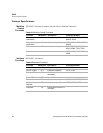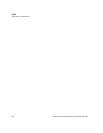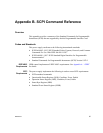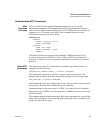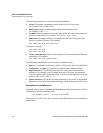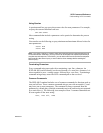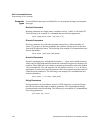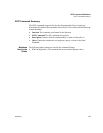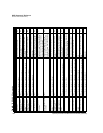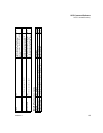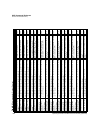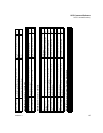SCPI Command Reference
Understanding SCPI Commands
100 Operating Manual for Multichannel Functionality (GPIB-M)
The following punctuation is sent with the command string:
• Colons (:) separate command keywords from lower-level keywords.
For example, CAL:CURR:STAT.
• Blank spaces separate command keywords from parameter values.
For example, CURR 0.1.
• Commas separate parameters from each other when more than one parameter is
sent in the same string. For example, CAL:STAT OFF,”1234.”
• Semicolons (;) separate multiple commands from the same subsystem. This
allows for greater efficiency. For example:
CAL:CURR:LEV MIN;VOLT:LEV MIN
is the same as typing:
CAL:CURR:LEV MIN
CAL:VOLT:LEV MIN
• Colons and semicolons can be used together to link commands from different
subsystems. For example:
CAL:CURR:LEV MIN;:MEAS:CURR?
The following punctuation is not sent with the command string:
• Braces ( { } ) identify a selection of choices. Choose one of the enclosed values.
• Vertical bars, or pipes, ( | ) separate the choices found within the braces.
• Angle brackets ( < > ) identify where specific values must be entered for a
parameter. For example, in the example at the top of the page, the parameter
<current> appears in the command string. To set the current setpoint to 0.1A, the
syntax is CAL:CURR:LEV 0.1.
• Square brackets ( [ ] ) identify optional parameters or keywords. If an optional
parameter is not sent with the command string, a default parameter will be used.
Using Minimum and Maximum
In the following example, Minimum and Maximum are offered as alternative choices
to declaring a specific parameter value.
CAL:CURRent:LEVel {<current>|MIN|MAX}
The string CAL:CURR:LEV MIN sets the current calibration level to the minimum
model value.





